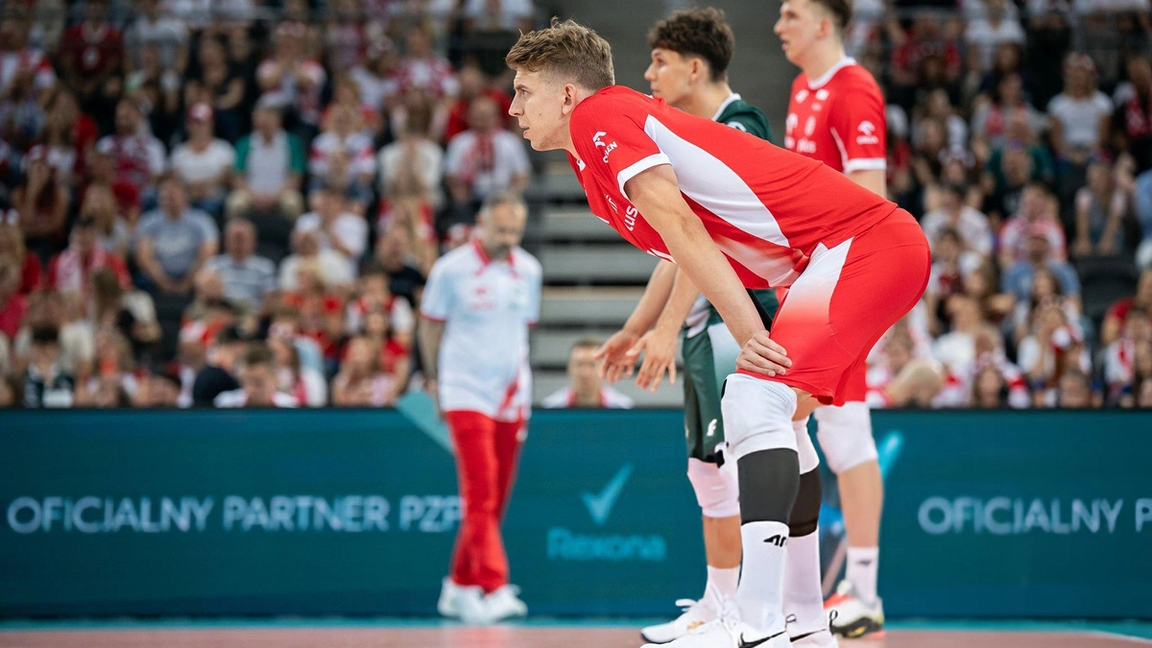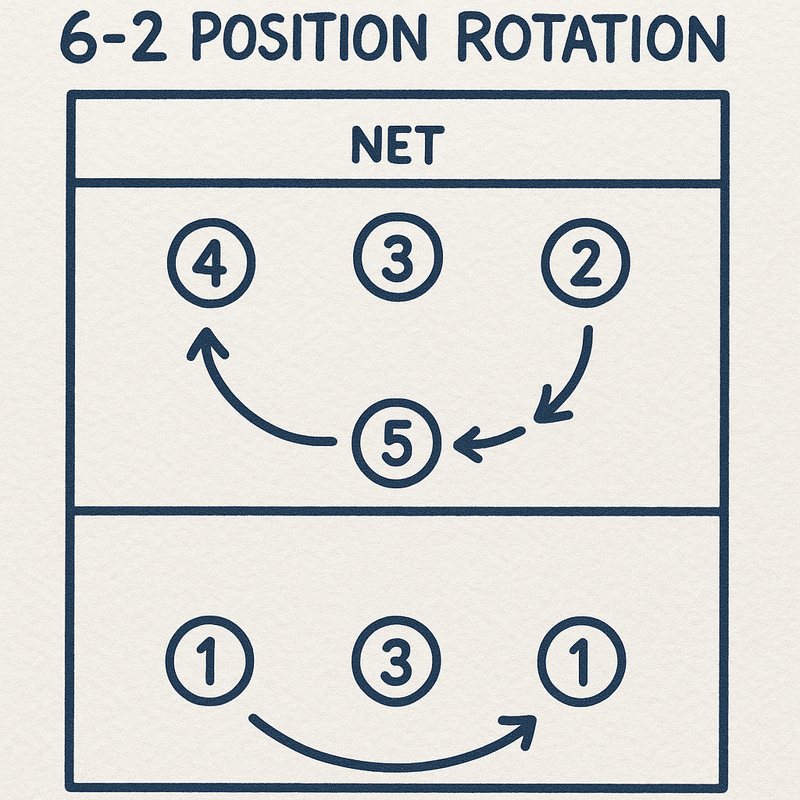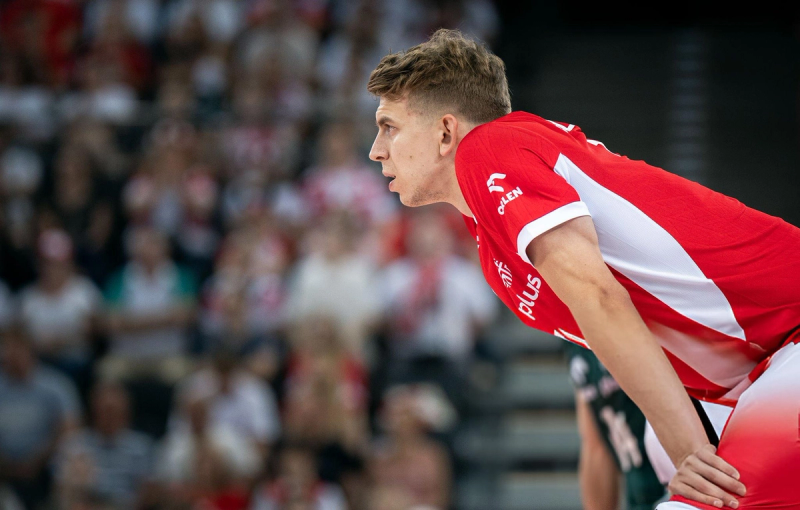
Rotation and Positioning Drills: Understanding the 6-2 Formation Movements

Matt Nikishin
•
11th August, 2025
📌 Introduction
The 6-2 formation is one of the most popular volleyball systems, especially in high school, college, and club play.
In this system:
- The “6” means all six players on the court are capable of attacking from the front row.
- The “2” refers to the two dedicated setters, who set only when they are in the back row.
This approach ensures three attackers in the front row at all times, making the offense more dynamic and difficult to defend. The trade-off? More substitutions and slightly more complex rotations that require practice to perfect.
📚 Basics of the 6-2 Formation
- Two setters rotate opposite each other on the court.
- A setter only sets when in the back row; when they rotate to the front row, they become a hitter (often a right-side attacker).
- With the setter in the back row, the front row always has an outside hitter, a middle blocker, and a right-side hitter ready to attack.
🔄 Rotation Positions

Positions are numbered 1–6, starting from the back right and moving clockwise:
- Position 1 (Back Right) – Typically where the setter starts.
- Position 2 (Front Right) – Right-side hitter.
- Position 3 (Front Middle) – Middle blocker.
- Position 4 (Front Left) – Outside hitter.
- Position 5 (Back Left) – Defensive role, often an outside hitter in the back row.
- Position 6 (Back Middle) – Libero or defensive specialist.
Note: In a 6-2, when a setter rotates into the front row, they are substituted out for a hitter.
🏋️ Key Drills for Learning 6-2 Movements
1️⃣ Rotation Walk-Through
- Purpose: Learn exact positioning in each rotation.
- Setup: Players walk through each rotation slowly no ball switching between serve-receive and defensive positions.
2️⃣ Shadow Setting Drill
- Purpose: Teach setters to transition to their correct setting position quickly.
- Setup: Both setters practice moving from their serve-receive spot into right-back (back row) or right-front (front row) positions.
3️⃣ Serve-Receive to Attack Drill
- Purpose: Combine passing, positioning, and quick offensive transitions.
- Setup: Begin in serve-receive formation, pass, and transition into the attack with proper setter positioning.
4️⃣ Setter Switch Drill
- Purpose: Practice smooth substitutions.
- Setup: Simulate gameplay where the setter leaves when moving to the front row, replaced by an opposite hitter.
🎯 Position Responsibilities

Setter (S)
- Directs the offense from the back row.
- Sets to outside, middle, and right-side hitters.
- Plays defense when not setting.
Outside Hitter (OH)
- Primary attacker.
- Passes in serve-receive and covers tips.
Middle Blocker (MB)
- Executes quick attacks and blocks.
- Transitions rapidly from blocking to hitting.
Right-Side Hitter (RS)
- Blocks the opponent’s outside hitter.
- Attacks from the right side and may set if needed.
Libero (L)
- Defensive specialist, cannot attack above the net.
- Usually covers middle-back or left-back.
Defensive Specialist (DS)
- Similar to libero but can serve and play multiple back-row positions.
🔄 Substitution Patterns in the 6-2

- When a setter rotates into the front row, they are subbed out for a hitter.
- When that setter rotates back into the back row, they sub back in for that hitter.
- This ensures setters only set from the back row, keeping three front-row attackers at all times.
💡 Tips and Common Mistakes
Tips:
- Setters should call plays early for smoother offense.
- Always know your rotation number and responsibilities.
- Transition quickly from defense to attack.
Common Mistakes:
- Setters forgetting to switch after serve-receive.
- Overlapping illegally during serve.
- Slow transitions leading to weak offensive setups.
- Overusing substitutions and running out before the set ends.
Watch This Video to Understand 6-2 Video:
✅ Conclusion
The 6-2 formation maximizes offensive firepower, but it requires clear rotation understanding, fast transitions, and strong communication.
By practicing rotation walk-throughs, shadow setting, and serve-receive to attack drills, teams can master this system until movements become instinctive allowing them to play a faster, more unpredictable style of volleyball.
🎯 Want to Master the 6-2 Like a Pro?
If you want to run the 6-2 with elite-level timing and positioning, you need more than diagrams — you need personalized coaching.
🏐 Rewind helps you:
- Analyze your team’s rotation on video
- Identify overlap and positioning mistakes
- Improve setter-to-hitter timing
- Optimize substitution efficiency
📈 Train smart. Rotate sharp. Win more points.
🔗 Try it now at TryRewind.co
📸 Click the image below to start mastering your rotation today.
